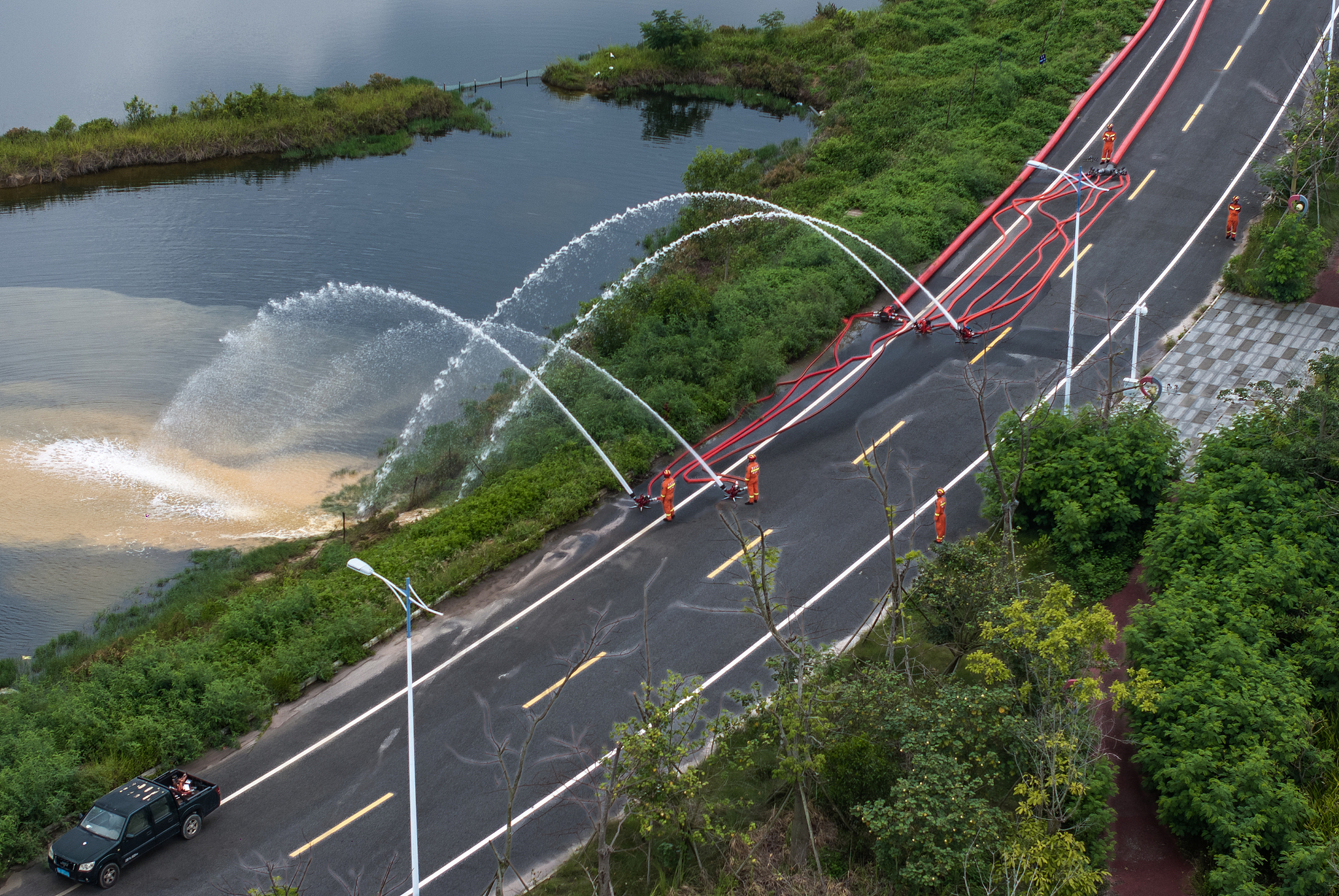
The Chinese Ministry of Emergency Management holds a regular press briefing in Beijing, China, July 15, 2025. /MEM
In a promising sign of progress, China reported a significant reduction in safety accidents and natural disasters in the first half of 2025. Despite the overall positive trends, challenges remain, particularly in high-risk industries and certain disaster-prone regions.
Officials briefed the media on Tuesday on the latest figures for safety accidents and natural disasters in the first half of 2025 and potential risks in the third quarter.
Concerns linger in high-risk sectors
According to the latest report from the Ministry of Emergency Management (MEM), the first half of 2025 saw a 22.9 percent decrease in the number of industrial accidents compared to the same period last year, with 8,562 accidents recorded.
The number of fatalities also dropped by 17.8 percent, totaling 8,079 deaths. Among these incidents, there were 4 major accidents and 172 large accidents, reflecting a positive shift in China's safety landscape.
However, industry-specific challenges persist. Some sectors have seen major accidents due to long-standing risks:
Fire Hazards: Significant fires in crowded commercial venues, especially shopping malls, have raised alarms about fire safety standards.
Transportation: Major accidents in inland river shipping and the illegal transport of passengers in trucks and agricultural vehicles remain pressing issues.
Chemical and Fireworks: Explosions in the chemical and fireworks industries continue to threaten public safety, exacerbated by illegal production of hazardous materials.
Construction and Mining: Multiple large accidents have been linked to state-owned enterprises in the construction sector, including fatal collapses and falls. The mining industry also continues to face illegal mining issues, contributing to frequent accidents.
Manufacturing: A rebound in accidents in confined spaces and dust-related risks in manufacturing and trade industries has been noted.
Despite these ongoing risks, the overall decline in major and severe accidents suggests that safety measures and regulations are beginning to take effect, even as certain hazards remain stubbornly persistent.
Natural disaster overlook
China's natural disaster landscape in the first half of 2025 was marked by a decrease in overall damage, although specific regions and types of disasters caused significant disruptions. According to the National Disaster Reduction and Relief Committee, natural disasters, particularly earthquakes, floods and geological disasters, caused widespread damage across the country.
Earthquakes: A magnitude-6.8 earthquake in Xizang in early January resulted in substantial damage, but overall seismic activity remained below historical norms from February to June.
Floods and Droughts: While the overall flood damage was relatively light, southern regions experienced severe flooding. Meanwhile, drought conditions affected parts of both northern and southern China but have since begun to ease.
Geological Disasters: The southwestern provinces of Sichuan and Guizhou saw a high number of landslides, contributing to significant loss of life and property.
Forest Fires and Low-Temperature Disasters: Forest fires remained sporadic and manageable, with no major grassland fires reported. Additionally, the severity of snow and cold waves this year was significantly lower than in previous years.
The report highlighted that more than 25 million people were affected by various natural disasters, with 307 fatalities and 62,000 people being relocated to safer areas. The total economic loss from these calamities amounted to 54.11 billion yuan (nearly $7.5 billion).
Third quarter: Higher risks of accidents and disasters
The Ministry of Emergency Management is closely monitoring the heightened risk period in the third quarter of 2025, a time historically known for a surge in major accidents and natural disasters.
Xu Xianbiao, deputy director-general of the National Flood Control and Drought Relief Headquarters, and director of the Flood Control and Drought Relief Department of the Ministry of Emergency Management, said while the overall flood situation has been relatively stable, the nation is entering one of the most critical periods for weather monitoring and disaster response. China's flood season from July to August typically brings frequent heavy rainfall, typhoons and extreme heat, compounding safety risks.
During this time, the country faces heightened risks from extreme weather events such as heavy rainfall, typhoons, and floods, particularly in the southern and northern regions. The central and local governments are intensifying efforts to address these looming challenges.
As the summer travel season peaks and production activities intensify, the risks associated with transportation, hospitality and other high-traffic sectors increase.

Xu Xianbiao, deputy director-general of the National Flood Control and Drought Relief Headquarters, and director of the Flood Control and Drought Relief Department of the Ministry of Emergency Management, talked about potential risks in the third quarter, Beijing, China, July 15, 2025. /MEM
"During this time, the flood risks in southern regions, particularly the Yangtze River basin, and southwestern areas like the Pearl River and Yellow River, are expected to peak," stated Xu. "We anticipate that 2 to 3 typhoons will make landfall this year, with some potentially strengthening and impacting key regions."
With the nation's businesses entering their peak production phase, safety precautions in sectors like transportation, tourism and construction will be critical in preventing accidents and ensuring public safety. Experts are urging for heightened vigilance as both safety and disaster risks converge during this period.

A rescue drill is conducted in Maoming City, Guangdong Province, south China, July 10, 2025. /VCG
Conclusion: A complex landscape
While the first half of 2025 saw positive trends in reducing both accidents and natural disasters, the persistent challenges in high-risk sectors and vulnerable regions underscore the ongoing need for vigilance and action.
As the third quarter approaches, the government is ramping up efforts to safeguard public safety and minimize the impact of future disasters.
The coming months will test the country's resilience as it faces overlapping risks from safety issues and natural disasters. Officials say the coordinated efforts of the government and industries will be crucial in mitigating these challenges and ensuring the safety of the public.








 User Center
User Center My Training Class
My Training Class Feedback
Feedback












Comments
Something to say?
Login or Sign up for free